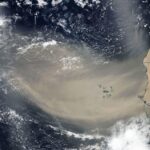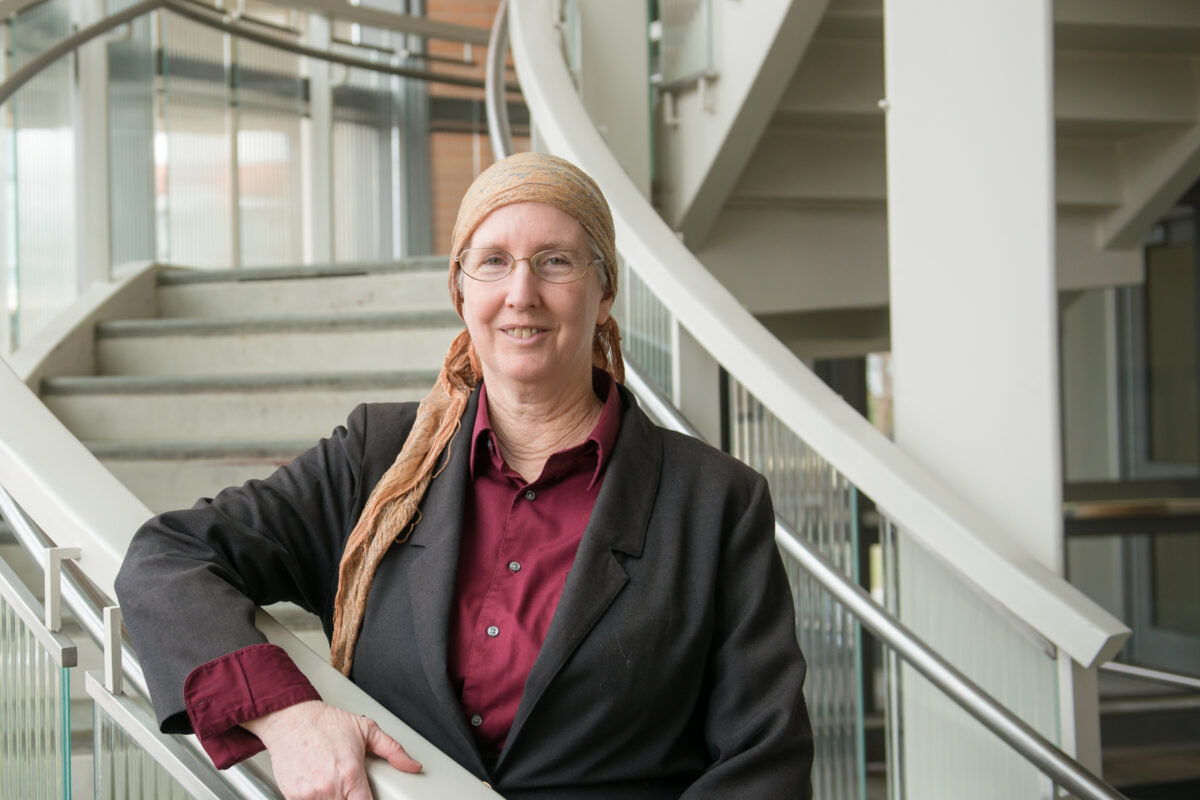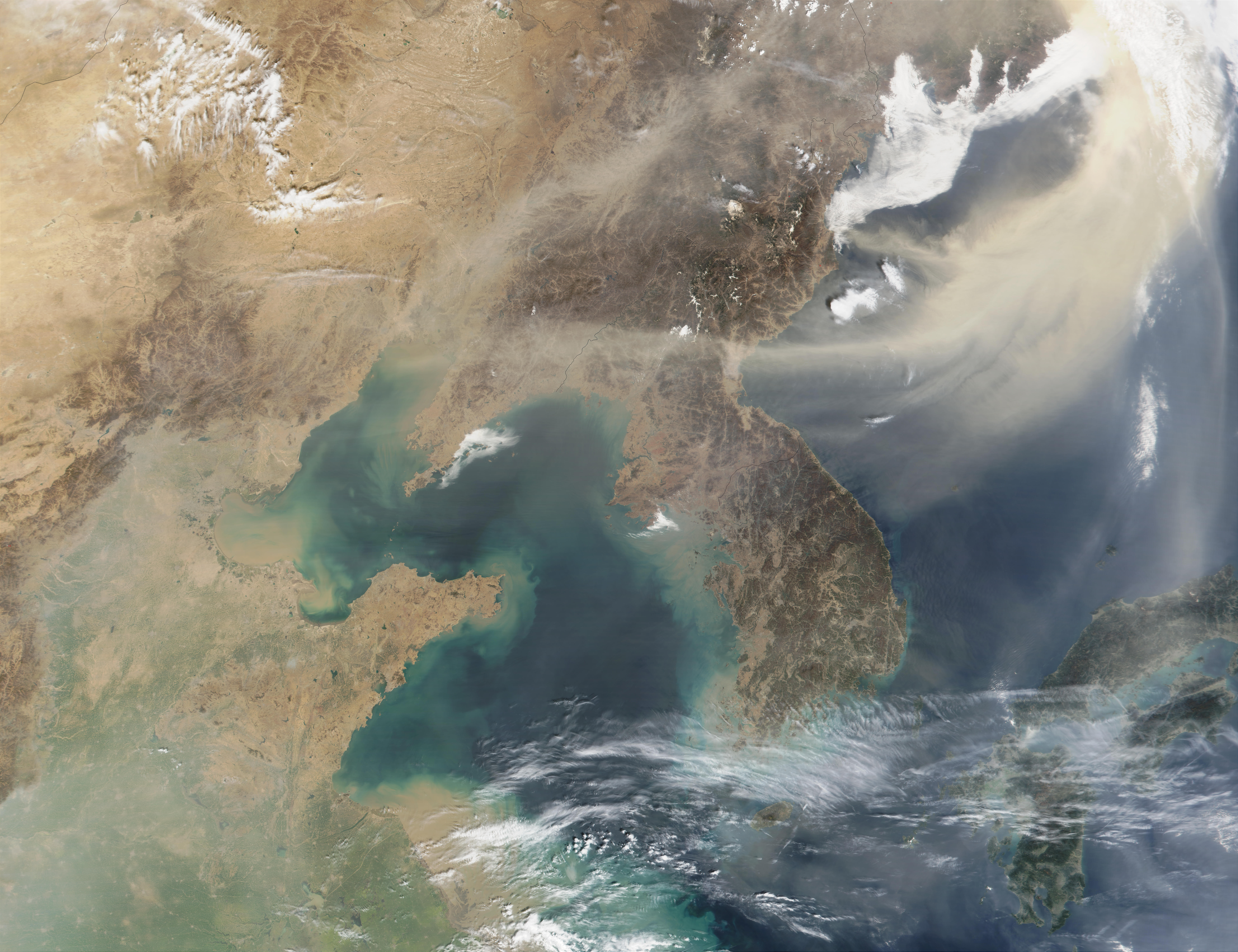
New findings in Science co-authored by UMBC researchers reveal details of the complex relationship between atmospheric dust and vast populations of phytoplankton at the ocean’s surface. These tiny photosynthetic organisms form the foundation of the ocean food chain and play a key role in the global carbon cycle, so the new research will be especially useful as dust patterns shift with climate change.
“Phytoplankton photosynthesis is fundamental to Earth’s carbon cycle,” says Lorraine Remer, an atmospheric scientist with UMBC’s Goddard Earth Sciences Technology and Research (GESTAR) Center II and a co-author on the study. “Change dust patterns, and you change phytoplankton health, which will subsequently affect carbon,” she explains.
Desert dust impacts ocean ecosystems
While most nutrition for phytoplankton rises up from the deep ocean, a meaningful portion comes from dust that’s traveled through the atmosphere from the world’s deserts. That dust delivers vital nutrients when it’s deposited in the ocean, but scientists lacked specifics about how dust affects phytoplankton health and abundance.
With their new Science paper, the research team, led by Toby Westberry, an oceanographer at Oregon State University, became the first to find a phytoplankton response to dust deposition across the global oceans.
 Lorraine Remer in the UMBC Physics Building (Marlayna Demond ’11/UMBC)
Lorraine Remer in the UMBC Physics Building (Marlayna Demond ’11/UMBC)
“This is really the first time it has been shown, using the modern observational record and at the global scale, that the nutrients carried by dust being deposited on the ocean are creating a response in the surface ocean biology,” Westberry said.
The team analyzed their model’s results in conjunction with satellite observations of phytoplankton around the world, revealing how dust is affecting ocean ecosystems. By developing a baseline understanding, scientists now have a better chance at predicting how phytoplankton will change when patterns of dust deposition change, which will have cascading effects throughout the ocean and beyond.
Models fill the gaps
For the new study, the Oregon State contributors focused on using the satellite data, which measures color changes in the ocean’s surface, to determine phytoplankton health and abundance across time and space.
Remer and UMBC researchers Yingxi Shi and Huisheng Bian focused on the dust model. “Determining how much dust is deposited into the ocean is hard, because much of the deposition occurs during rainstorms when satellites cannot see the dust. That is why we turned to a model,” Remer says. Remer and colleagues used observations to verify an existing NASA model before incorporating the model’s results into the study.
Combining their efforts, the research team found that dust’s effects on phytoplankton vary by region. Nearer the poles, more dust contributed to greater overall abundance of phytoplankton and improved health. Nearer the equator, dust primarily affected phytoplankton health and physiology, but not abundance.
 Atmospheric dust (upper right) from China sweeps across the Korean peninsula and onward. (Image courtesy of NASA Earth Observatory)
Atmospheric dust (upper right) from China sweeps across the Korean peninsula and onward. (Image courtesy of NASA Earth Observatory)
Joining forces across scientific fields
The research team plans to continue to work together to better understand the relationship between dust and phytoplankton—and how it may change over time. They are particularly anticipating more advanced satellite data from NASA’s Plankton, Aerosol, Cloud, ocean Ecosystem (PACE) satellite mission, some of which will be collected by the HARP2 instrument designed and built by UMBC.
There are many questions still to answer. “We still don’t understand how the specific nutrients in the dust become available to the phytoplankton in the water,” Remer says, “nor do we understand the role of individual dust sources providing specific nutrients to different regions of the ocean.”
Part of what made this work possible was collaboration between researchers in different fields. “One exciting aspect of this study was working with the oceanographers, who brought an entirely different perspective,” Remer says. “The scientific advances became possible only after the atmospheric scientists and oceanographers joined forces.”
It’s that interdisciplinary collaboration that will enable the team to continue asking and answering important questions about our global ecosystems.





